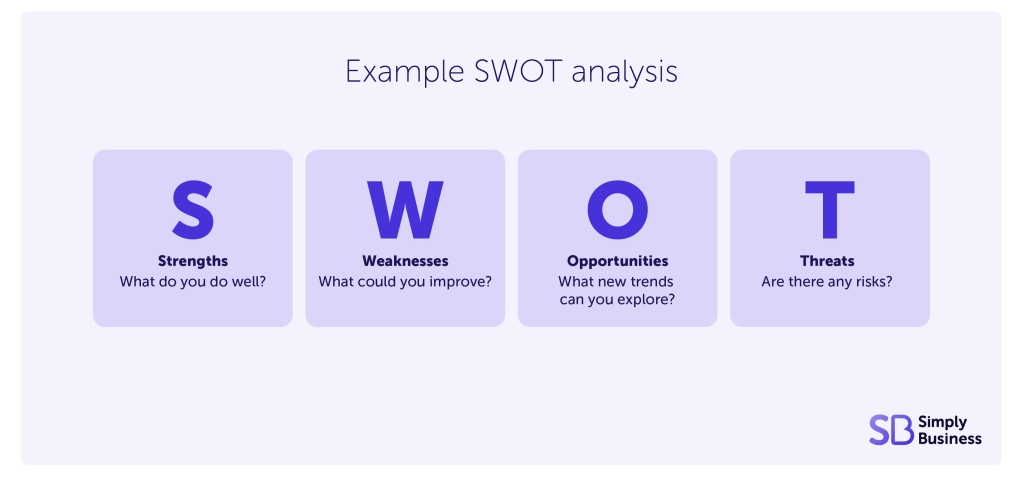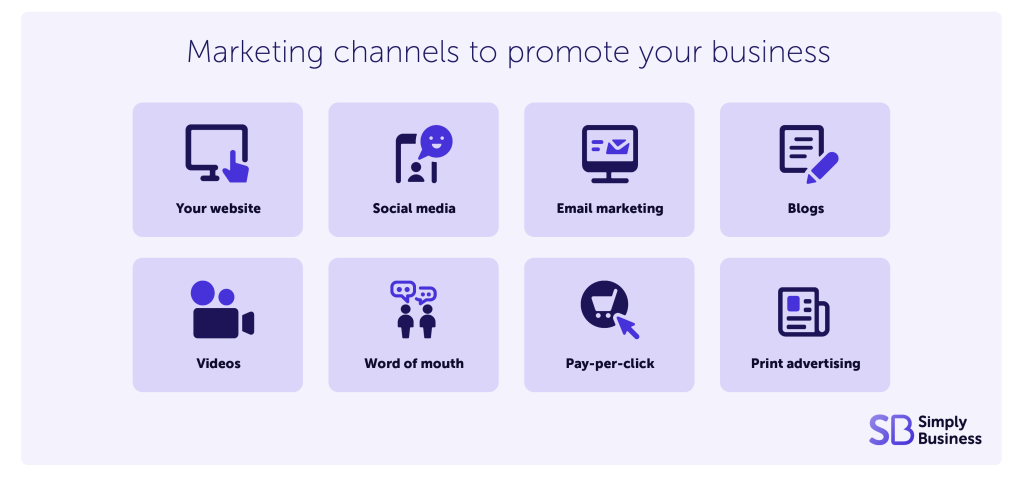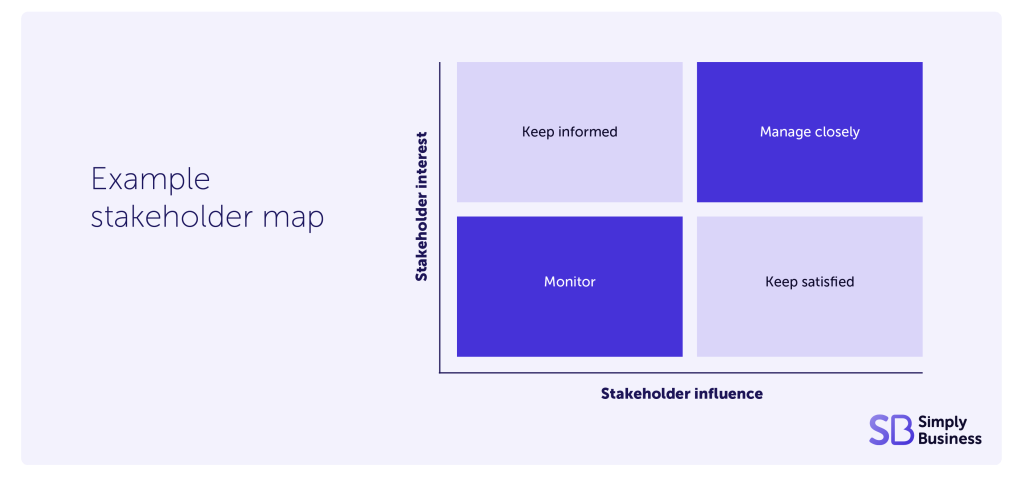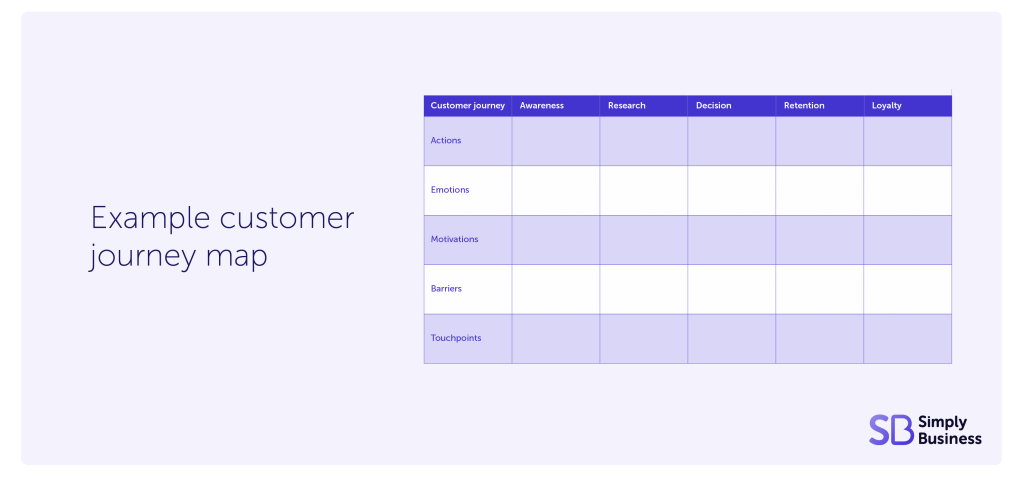A marketing plan will help you reach customers and promote your products or services.
Read our guide to writing a marketing plan for your business and download a free marketing plan template to get you started. We’ll cover:
- What is a marketing plan?
- How to write a marketing plan
- How to develop a go-to-market strategy
- Marketing ideas for hair and beauty businesses
- Marketing ideas for trades businesses
- Marketing ideas for cleaners
- How to market your business on a budget
What is a marketing plan?
A marketing plan is a document that lets you establish and track your marketing strategy (or strategies) over a period of time.
Let’s say you want to launch a new product or service. While some businesses might develop these first and then consider marketing as an afterthought, a marketing plan helps you make marketing part of the entire process – and make smarter decisions along the way.
You could have a marketing plan that details the overarching marketing strategy for your business, or you might have individual marketing plans outlining different strategies for different goals.
Write a marketing plan that’s concise, easy-to-read, and compelling to help get people on board with your strategy – whether they’re team members or investors.
But how to create a marketing strategy in the first place? And what should be included in a marketing plan?
Marketing plan template
Whether you run your business on your own or have a team of people helping, a marketing plan gets you thinking about growth objectives and helps you come up with the best ways to achieve them.
Download your free, editable marketing plan template to create your own marketing plan.
How to write a marketing plan – step-by-step
Follow these marketing plan steps to turn your ideas into action – and start growing your business.
1. Work out your goal(s)
It doesn’t matter whether you call it your mission, your goal or your objective. You should define what you want to achieve before planning how to get there.
You can do this by developing your marketing goals based on your overall business objectives.
The best way to approach this is to have SMART goals – specific, measurable, achievable, relevant, and time-bound. This makes sure you know where you’re going and, importantly, when you’ve achieved your aims.
Once you have your goals, you can work backwards to create more manageable steps and small goals to reach your main goal.
For example, if you run a vegan café one of your objectives might be to get more people to try vegan dishes. So, your marketing goal would be to increase footfall to your café – which should have an impact on your sales. From there, you can come up with specific numbers that you can measure over time.
2. Who are you targeting?
Some people won’t be interested in your product or service, despite all the money and time you spend trying to attract them. That makes targeting the right audience essential – and a key question to answer in your marketing plan.
You should think along the lines of age, gender, location, how much money they earn and any other demographics you think could be important.
In the vegan café example, younger people may be more likely to go vegan. So you could build a customer persona around someone who’s grown up eating meat but is becoming more interested in vegetarianism and veganism. Where does that person live? What would attract them to your café?
This can get psychological as you work out what marketing and messaging your target audience will respond to.
3. Research and analyse
You’re not working in a vacuum. You have competitors – they may be bigger or have more experience in the market, so you should detail what they’re currently doing with their marketing.
This will help you identify winning strategies that you might be able to replicate. But it’ll also help you understand the differences between your competitor’s marketing mission and what you hope to achieve – helping to plug the gap between the two businesses.
Read more: How to do competitor analysis
Another vital part of a marketing plan is a SWOT analysis. SWOT stands for:
- strengths
- weaknesses
- opportunities
- threats
You should do a SWOT analysis based on your marketing goals. You can complete this as a grid with four boxes, filling it in with bullet points for each section.

Your detailed market research should also include industry trends and opportunities for your business to stand out.
To help you gather your research, you could try:
- customer surveys
- interviews
- focus groups
- pricing analysis
Our guide to pricing a product has more information on setting the right price to make money.
4. Explain your strategy
This is the section where you explain the strategies and initiatives you’re going to use to reach your goals. It’s also a good point to note down what makes your business stand out from your competitors – these are your unique selling points (USPs).
Have a think about which marketing channels best suit your aims. Here are some examples of different marketing channels:
- your website
- social media
- email marketing
- content marketing (think brand content, blogs and search engine optimisation, or SEO for short, and videos)
- word-of-mouth marketing
- pay-per-click (PPC for short)
- print advertising
- billboard advertising

Digital marketing is a key tool in today’s modern world. Trends and best practices can change frequently, so it’s important to keep up to date with the latest industry developments.
As part of your marketing planning process, you should think about the messaging you’re putting across through your marketing channels to attract customers. What problems are you solving for your target audience? What’s different about your product or service? And how do existing customers rate you?
Our ultimate guide to marketing your business includes everything you need to know about advertising and channels you can use to promote your business.
5. Measuring performance
You won’t know if your strategy’s working if you’re not measuring performance. This goes back to the numbers mentioned in point one.
Lots of businesses use key performance indicators – or KPIs – to measure the effectiveness of their marketing. You might also hear these called ‘metrics’.
It sounds like jargon, but they’re useful when tracking how you’re doing over time. Some KPIs you could set include:
- growth in sales
- growth in website visitors
- social media likes, shares, or engagement
6. Consider the admin
Budgeting, processes, who’s going to be involved (the stakeholders – this stuff might be boring, but you need to think about it now to make sure your plan stays on track).
If you don’t budget, for example, you could find yourself spending money you don’t have in the pursuit of your targets. Or that you’re not making a good return on your investment (ROI).
And if you have employees, consider who’s best placed to help you reach your goals. They’ll all have different skill sets – could someone help out on the budgeting, while another runs your social media? Detail all of this in your plan.

7. Write a summary of your marketing plan
This is called the executive summary. While it should go at the start of your marketing plan, it’s best to write it after you’ve written the whole document. That’s because the executive summary has to include short descriptions of each section, highlighting the most important information.
Think of it as an elevator pitch – you’re hoping to attract investors to help you achieve your marketing goals, or win employees over to your plan. The executive summary needs to be compelling enough so that they carry on reading. Be sure to include a short summary of your business and its mission too.
There are plenty of free tools available online to help you learn how to write an executive summary. Our free executive summary template will help you to summarise your objectives and strategy when writing your plan.
Develop a go-to market strategy
For your marketing plan to succeed, you also need to make sure you have a fully developed go-to market strategy.
Whilst your marketing strategy can be used to continually promote your business and keep a competitive advantage, your go-to market strategy is crucial in developing your business and any new products or services.
Before you go to market, there are a few things you should think about first:
Understand customer personas
We’ve already discussed the importance of knowing your target customers, but you can develop customer personas to understand them even more.
There are many free digital tools you can use to help here. If you have a website or online presence, spend some time getting to know Google Analytics and Facebook Insights. This is a great way to see who’s visiting your site and interested in your products and services. Not only can this help you with developing further products, but it can also give you key insights on how to improve your digital marketing.
Learn more about how to create a website.
Map the customer journey
Once you know who your customers are, you need to map their journey. This is everything that happens from first discovering your business to becoming a customer.
This is often called the marketing funnel and can be broken down into the following levels:
- awareness
- consideration/research
- conversion/decision
- loyalty
- advocacy/loyalty
Once you start mapping your customer journey – whether through digital tools or customer feedback – you can identify which areas may need improvement.

Example customer journey map for businesses
Define your proposition
You can’t expect your customers to know the value of your business if you don’t yourself. Spend some time defining what exactly makes your business different from your competitors. Define these KSPs (key selling points) and think about how exactly you can present this to your customers through your advertising.
Create your distribution plan
And finally, the last step in any good go-to market strategy is your distribution plan. Think again about your target audience – and what apps, websites, and places they visit – and tailor your marketing accordingly. It’s a good idea to plan where and when you’ll distribute your marketing material before you begin creating it.
Marketing plan example for a hair and beauty business
Here’s a few ideas you could try to attract more customers to your hair and beauty business:
- hair and beauty tutorial videos (on Instagram, for example)
- email newsletter with updates about staff, discounts, and new products or services)
- enter local awards
- build a good business website with integrated appointment booking
- collaborate with other local businesses – for example, stocking speciality tea and coffee or decorating with plants from a nearby florist
- highlight your hair and beauty insurance, accreditations, and awards
Read our guide on how to advertise your hair and beauty business for more tips.
Marketing plan example for trades businesses
In addition to many of the ideas above, trades businesses could try these marketing strategies:
- make sure your contact details are up to date across your website, Google, and any other business profiles you own
- list your services and prices on your website and Google Maps
- add a logo to your business van
- email happy customers to ask for a testimonial or a Google review
- show your tradesman insurance and accolades on your website
Read more tips on marketing for tradesmen here.
How to create a marketing plan for a cleaning business
A marketing plan on how to advertise cleaning services could include things like:
- sharing cleaning tips in your email newsletter
- polishing the KSPs on your website so the benefits are clear to customers, for example if you use environmentally friendly products or have B Corp status
- putting testimonials and customer reviews on flyers
- offering loyalty discounts to regular customers
- mentioning you have cleaning insurance on your website
Marketing planning on a budget
Here are some free ideas you could incorporate into your business marketing strategy:
- start small and be highly targeted
- enter business awards
- send promotional offers along with your invoices or deliveries
- email marketing
- build a blog or social media following
Lastly, you might be able to use technology to save money on your marketing. We’ve looked at how small businesses could use AI to boost their marketing as well as simple advertising ideas on a budget.
Small business guides and resources
Ready to set up your cover?
As one of the UK’s biggest business insurance providers, we specialise in public liability insurance and protect more trades than anybody else. Why not take a look now and build a quick, tailored quote?
Photograph: Chanelle Malambo/peopleimages.com/stock.adobe.com
